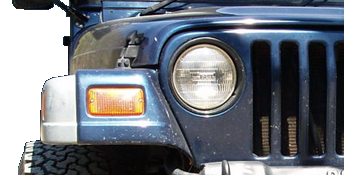XJsavage
CounterCulture
- Joined
- Aug 15, 2009
- Location
- Lyle's Ford SC
And possibly some welding tech too. 
Aluminum wheels in particular.
When talking automotive passenger car wheels, how does one go about determining the alloy that was used? Are their stamps anywhere on it?
I've heard aluminum wheels called "pot metal" and some just call it "cast". Is there even a difference?
I remember a friend of mine had a Jaguar (I think) wheel crack one time and called around for days looking for someone who would even attempt to weld it, found only one which happened to be a older local man that's built custom-equipment trailers his whole life and recently passed. Wheels held up fine for years.
The main reason I'm asking is because I'd really like to add rock rings to a set of aluminum Superduty wheels, probably just on the outer lip and material would be either 3/8" plate or perhaps even solid stock. Seems like chipping is the downside to any aluminum wheels so I'm wanting to prevent it.
As far as welding it, my understanding is that aluminum becomes brittle after it's welded. I've seen myself where material surrounding a weld breaks from a change in temper. Obviously, I don't want anything to do with that noise, so let's say I did a 1/2" diameter piece of solid 7075 (or unless a softer 6061 would be better(?)) aluminum and formed to fit the inside outer lip of the wheel, my plan of action there would be to only run uniformly staggered beads around the weld area unless there's a better method. If my thinking is correct, that would allow some stress relief in an impact situation so the two alloys aren't fighting each other, but still able to work together.
I also wonder too, which welding process would be the best. I have ACTIG, stick and Pulse MIG ready at hand, but I'm wondering if I should use the more focused heat and smaller bead of the TIG, the wider and less intense spray of the MIG (argon shielded), or the penetrating power of the stick?
I can also pre-heat, re-heat, and the like with walk in ovens.

I'm buying.

Aluminum wheels in particular.
When talking automotive passenger car wheels, how does one go about determining the alloy that was used? Are their stamps anywhere on it?
I've heard aluminum wheels called "pot metal" and some just call it "cast". Is there even a difference?
I remember a friend of mine had a Jaguar (I think) wheel crack one time and called around for days looking for someone who would even attempt to weld it, found only one which happened to be a older local man that's built custom-equipment trailers his whole life and recently passed. Wheels held up fine for years.
The main reason I'm asking is because I'd really like to add rock rings to a set of aluminum Superduty wheels, probably just on the outer lip and material would be either 3/8" plate or perhaps even solid stock. Seems like chipping is the downside to any aluminum wheels so I'm wanting to prevent it.
As far as welding it, my understanding is that aluminum becomes brittle after it's welded. I've seen myself where material surrounding a weld breaks from a change in temper. Obviously, I don't want anything to do with that noise, so let's say I did a 1/2" diameter piece of solid 7075 (or unless a softer 6061 would be better(?)) aluminum and formed to fit the inside outer lip of the wheel, my plan of action there would be to only run uniformly staggered beads around the weld area unless there's a better method. If my thinking is correct, that would allow some stress relief in an impact situation so the two alloys aren't fighting each other, but still able to work together.
I also wonder too, which welding process would be the best. I have ACTIG, stick and Pulse MIG ready at hand, but I'm wondering if I should use the more focused heat and smaller bead of the TIG, the wider and less intense spray of the MIG (argon shielded), or the penetrating power of the stick?
I can also pre-heat, re-heat, and the like with walk in ovens.

I'm buying.




